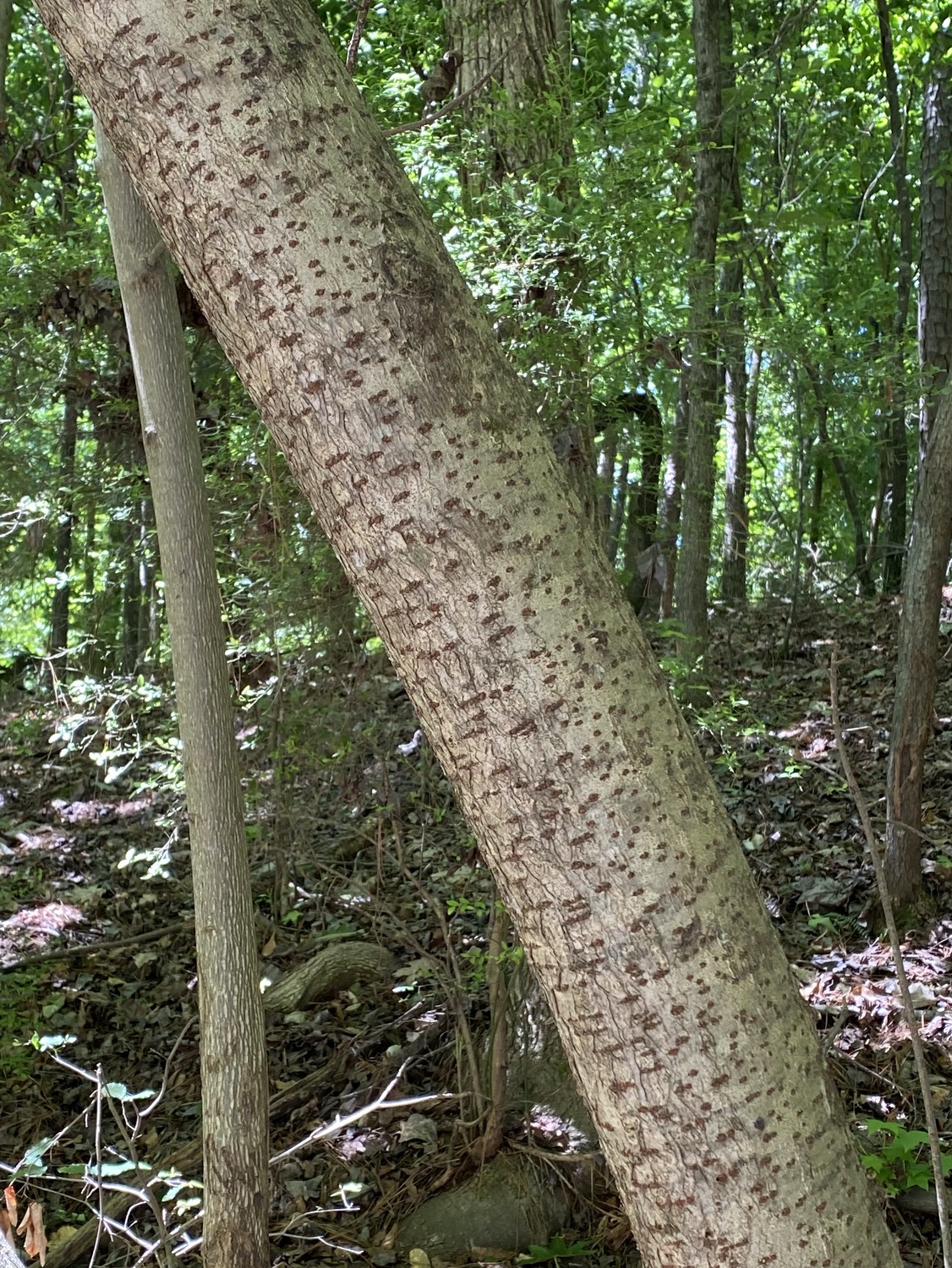TREES OF ATHENS: COMPOUND LEAVES
5/23/20
All of these trees have compound leaves—multiple leaflets as part of a single leaf. There are those that have relatively few leaflets, the hickories and the ashes, and then there are the hypercompound trees that have zillions of leaflets. There’s also the Winged Sumac, which can’t decide if it is a shrub or a tree.
Hickories
There are four common hickories that I’ve found in the area: Shagbark, Mockernut, Pignut, and Sand, and distinguishing them can be challenging at first. First, see if the bark hangs in long, coarse, peeling strips; if so, it is a Shagbark Hickory. Next, feel the leaf stalks: if they are furry, it is a Mockernut Hickory. If it is smooth, look at the underside of the leaf: if is whitish, it is a Sand Hickory, but if it is just a somewhat paler yellowish-green, it is a Pignut Hickory. If you have a 10x lens, look at t the underside of the leaf: if there are tiny brown nodules, it is a Pignut Hickory, but if there are round silver scales, it is a Sand Hickory.
There is one more hickory, the Bitternut Hickory, that should be in the area, but I have not yet found one. The leaves are a good bit smaller than all of the others.
Shagbark Hickory (Carya ovata). The leaves typically have five leaflets, with a hairless leafstalk. The bark is what is most distinctive about the Shagbark Hickory: it tends to peel up from the ends in long, shaggy strips. The only other local trees with bark at all similar are the White Oak and the Eastern Hophornbeam (or Musclewood). On the White Oak, the bark peels up from the sides, not the ends. The strips on the Eastern Hophornbeam are much narrower and finer than the coarse ragged strips of the Shagbark History.
I have not found the Shagbark Hickory in our neighborhood, although I suspect it may be in the backyards of houses, so not visible from the street. The only example I have found is in a moist valley in the UGA Botanical Gardens.
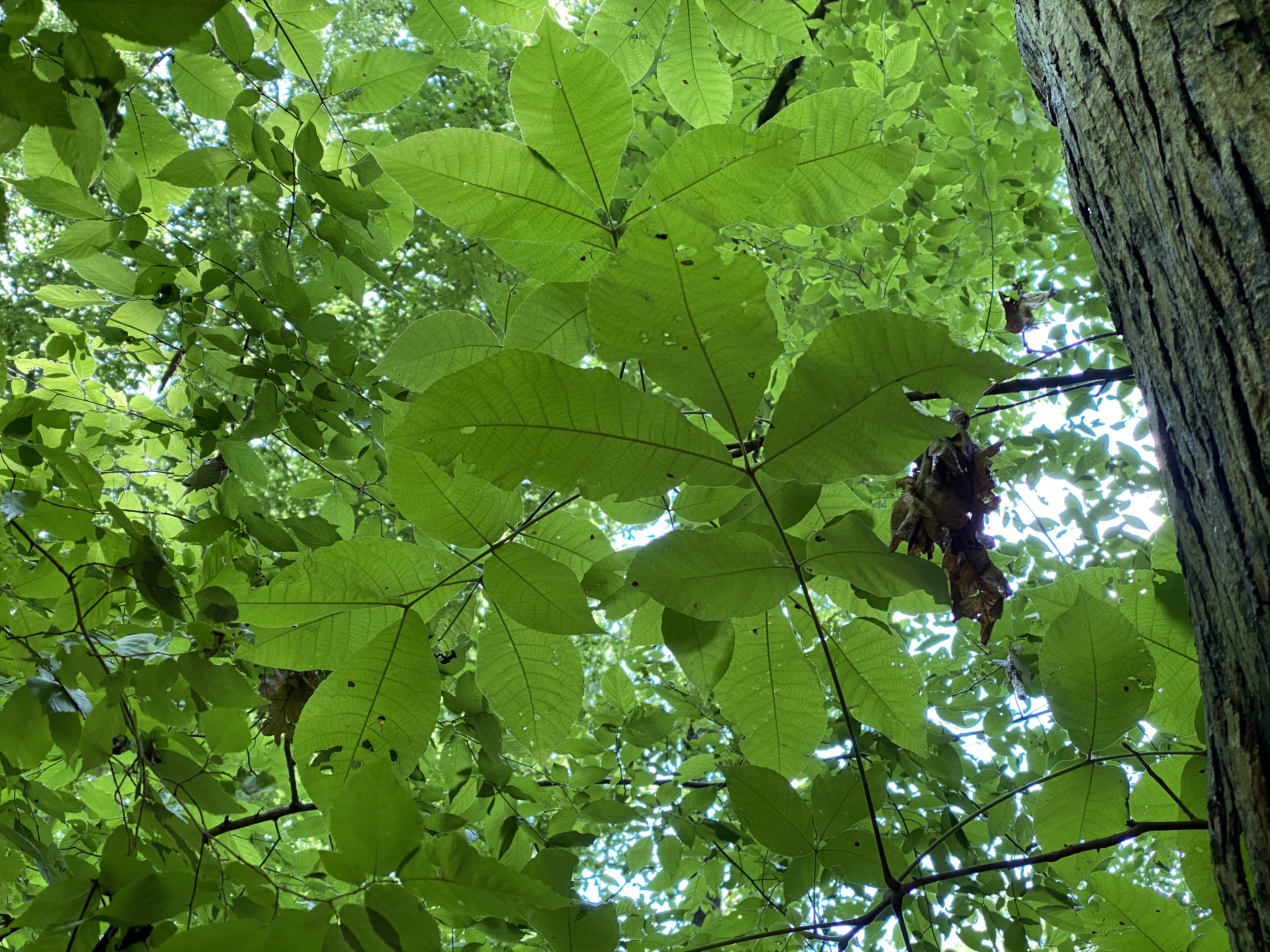
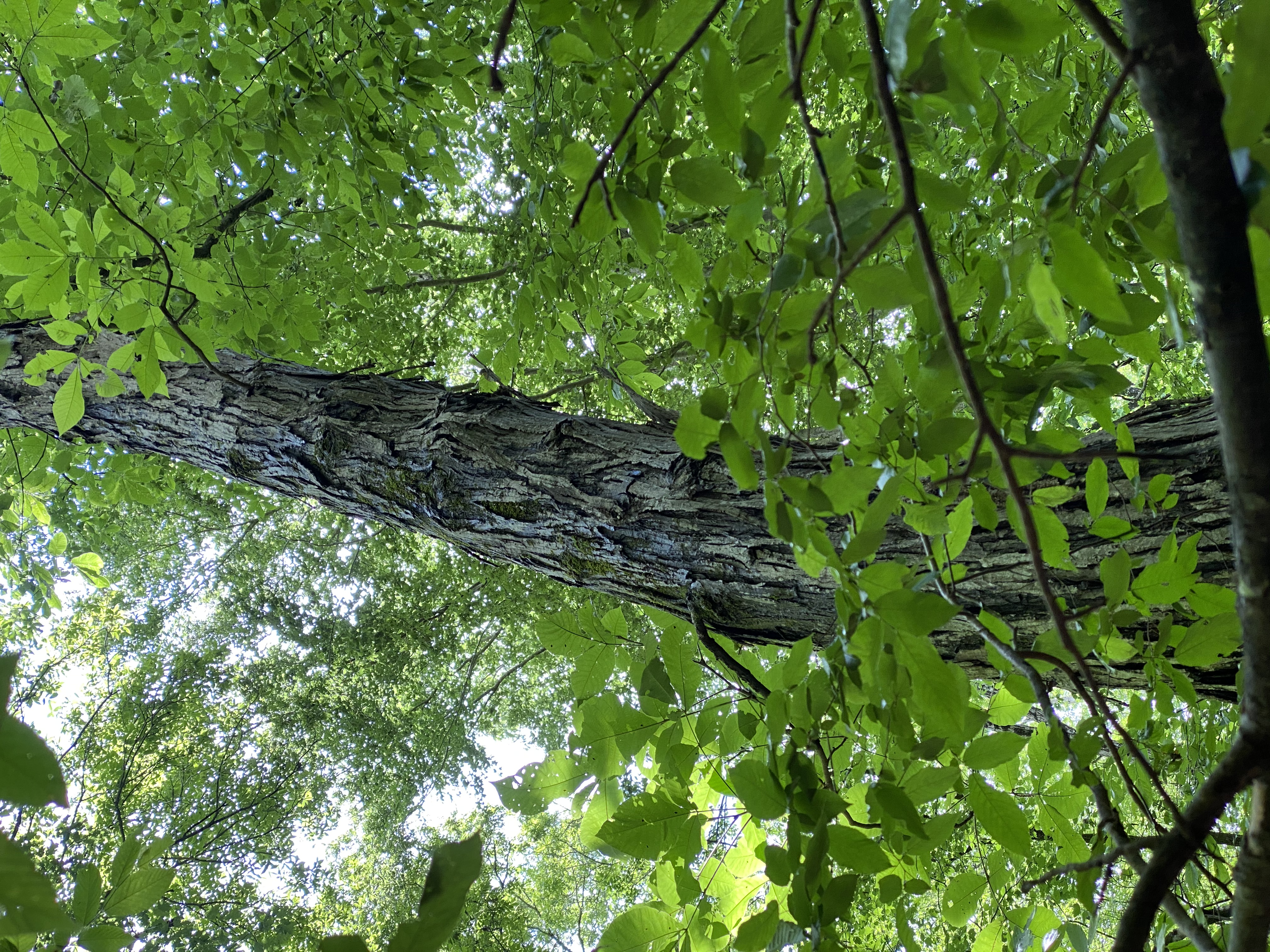
Mockernut Hickory (Carya tomentosa). This is the most common hickory in the area. The leaves typically have seven leaflets per leaf, and they are usually more rounded than those of the Pignut Hickory. Leaves are large, easily up to 12–16" long. Leafstalks are hairy. Bark consists of tight narrow ridges that form a diamond pattern.
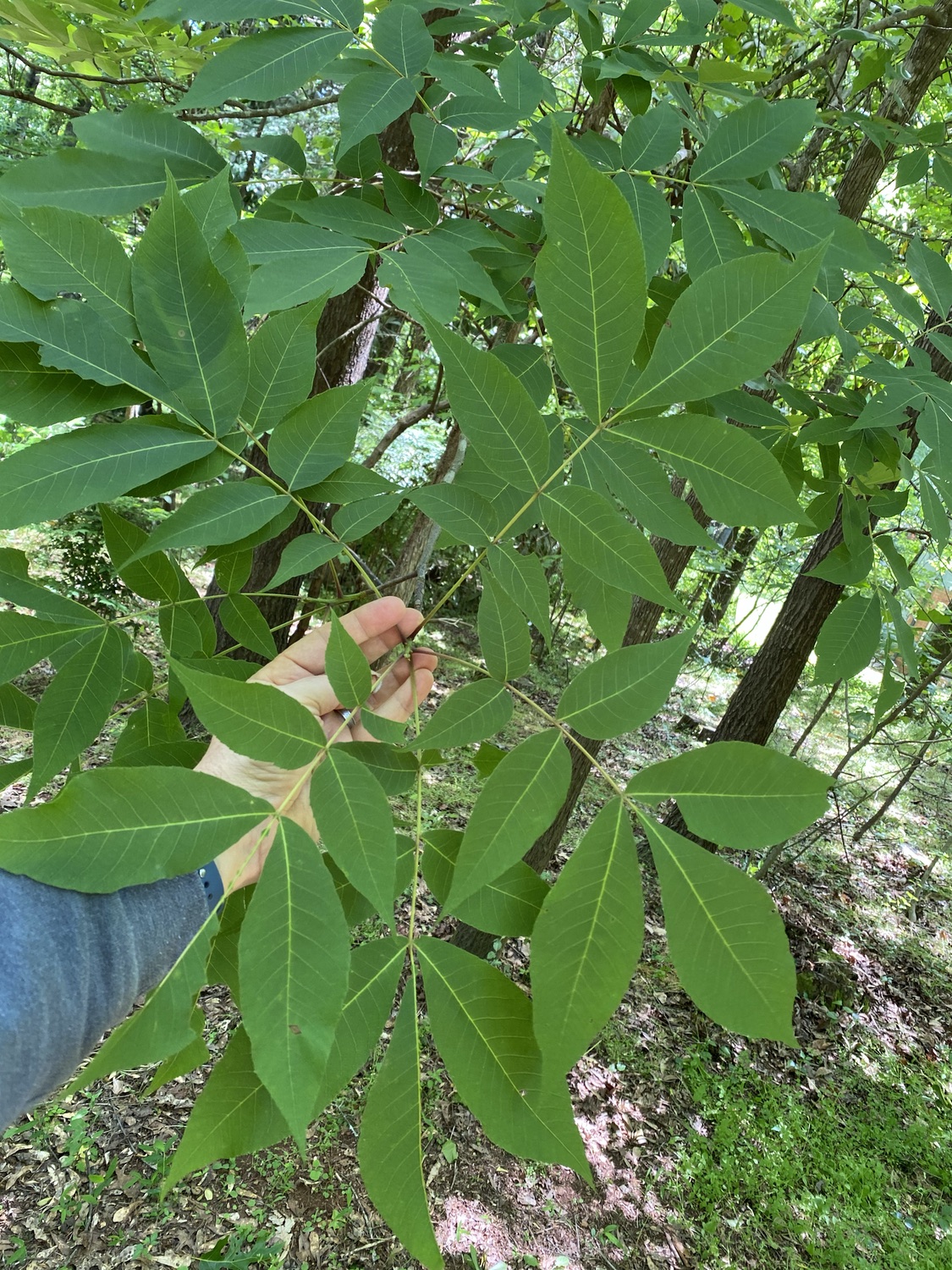
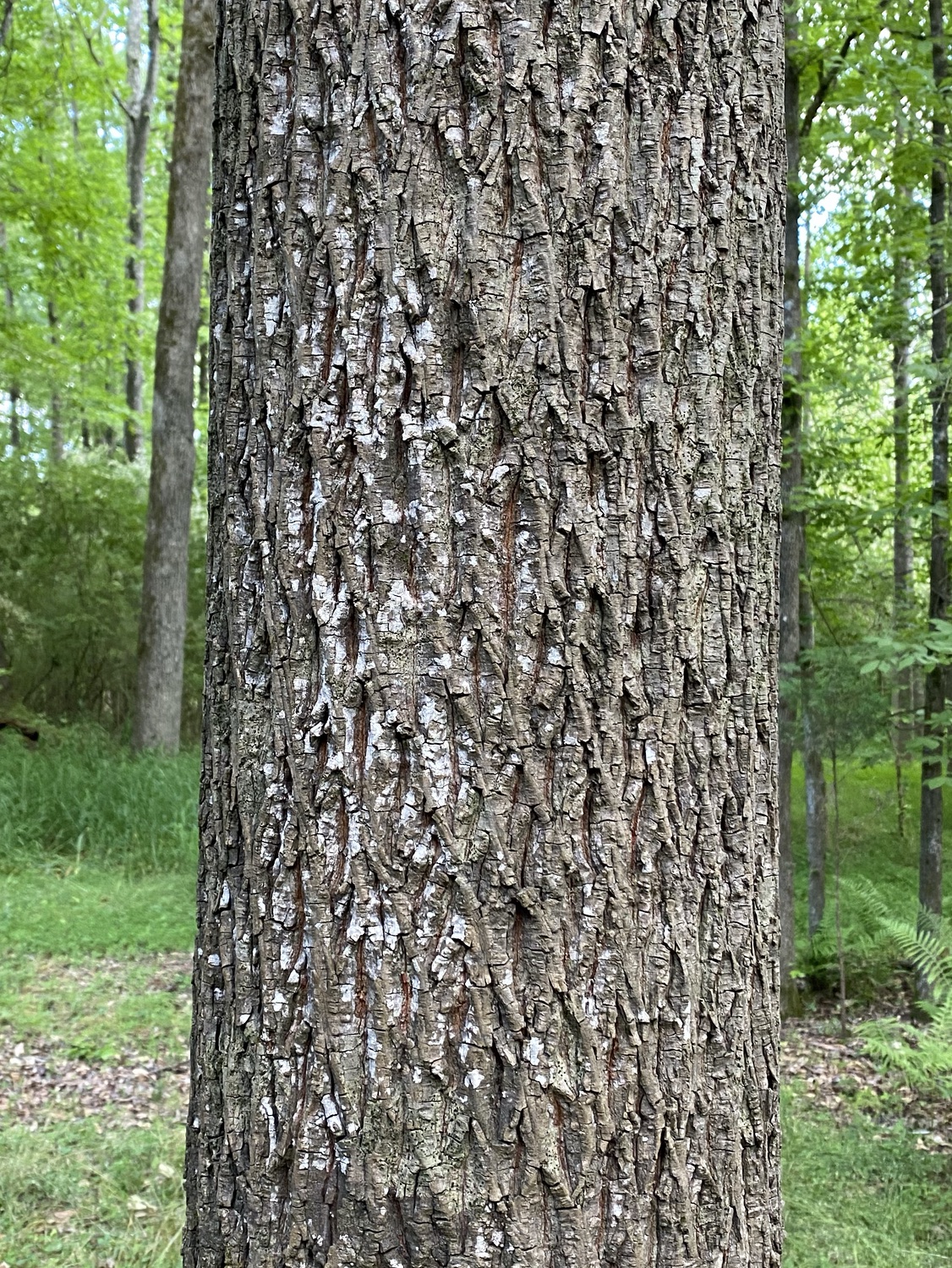
Pignut Hickory (Carya glabra). The Pignut is less common than the Mockernut Hickory, and it usually has five leaflets per leaf and has narrower leaflets. Some trees have seven leaflets per leaf or wider leaflets. Leafstalks are smooth. Visible with a 10x, the underside of the leaf has small dark globules especially along smaller veins. Bark consists of tight narrow ridges. The flowers are long and dangling, similar to all local hickories, and appearing in late April to early May.
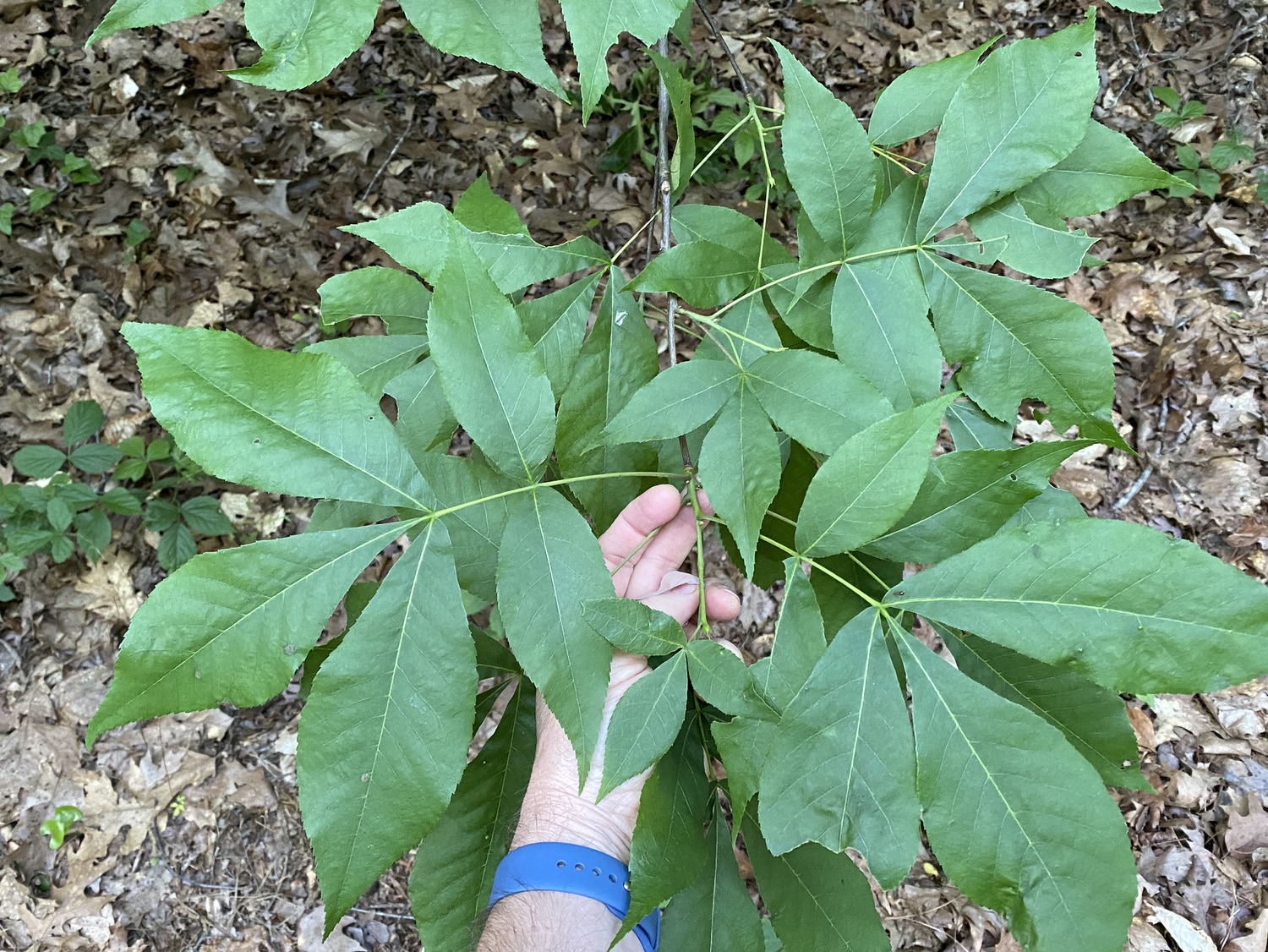

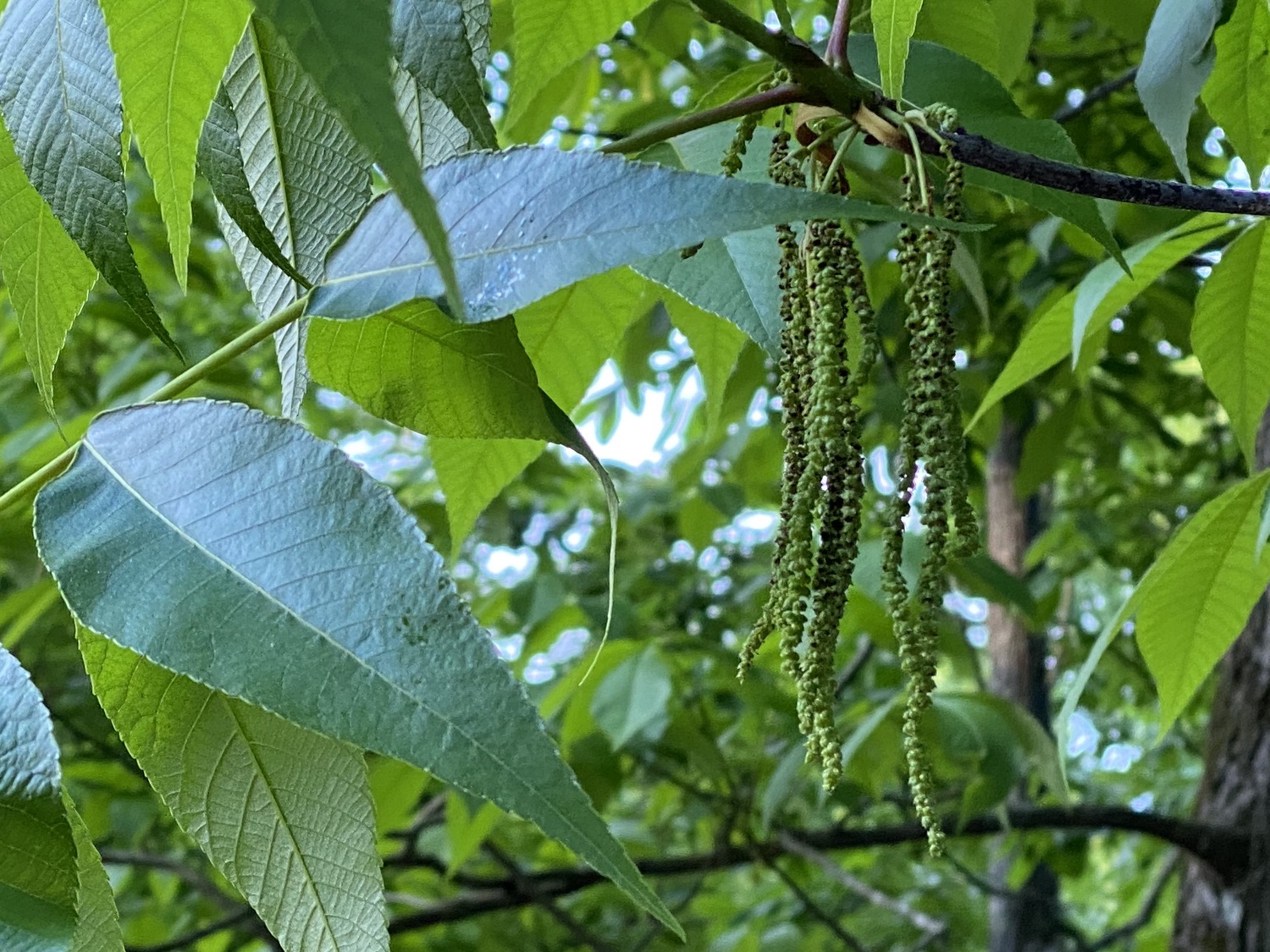
Sand Hickory (Carya pallida). This is the rarest of the local hickories, and so far, I’ve found only two, including this one sapling. The leafstem is hairy, like a Mockernut Hickory, but the leaves are much shorter and they are distinctively light, almost white underneath. With a 10x lens, you can see numerous tiny circular white to silvery scales on the underside of the leaf, whereas the bottom of a Mockernut has small amber-colored globules.

Here is a comparison of the front and back of the leaves of a Mockernut Hickory and a Sand Hickory. The vertical leaves are the Mockernut and the horizontal ones are the Sand. The darker colors are the tops of the leaves, which are almost identical in shade. Although the undersides of both species are lighter, the underside of the Sand Hickory is much lighter, almost white.
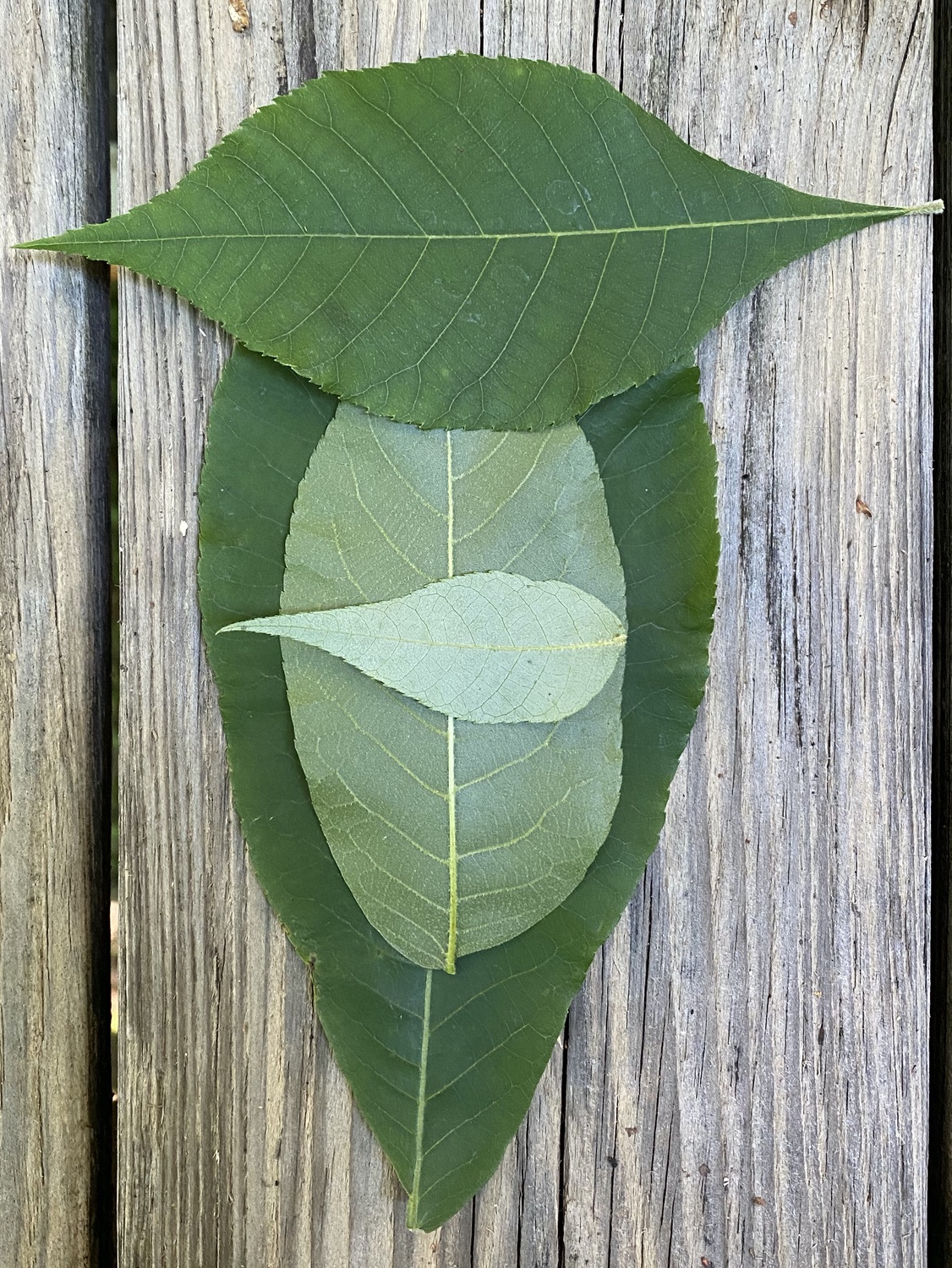
Ashes
Green Ash (Fraxinus pennsylvanica). The Green Ash has leaves that superficially look like a hickory, but the seven leaflets are narrower and more even in size than is typical for a hickory. In the spring and summer, light-green winged seeds hang grom the branches. The bark has tight interlacing ridges, also similar to a hickory. The Green Ash is most common in very moist areas, such as along rivers, whereas the hickories are most common in more upland areas.
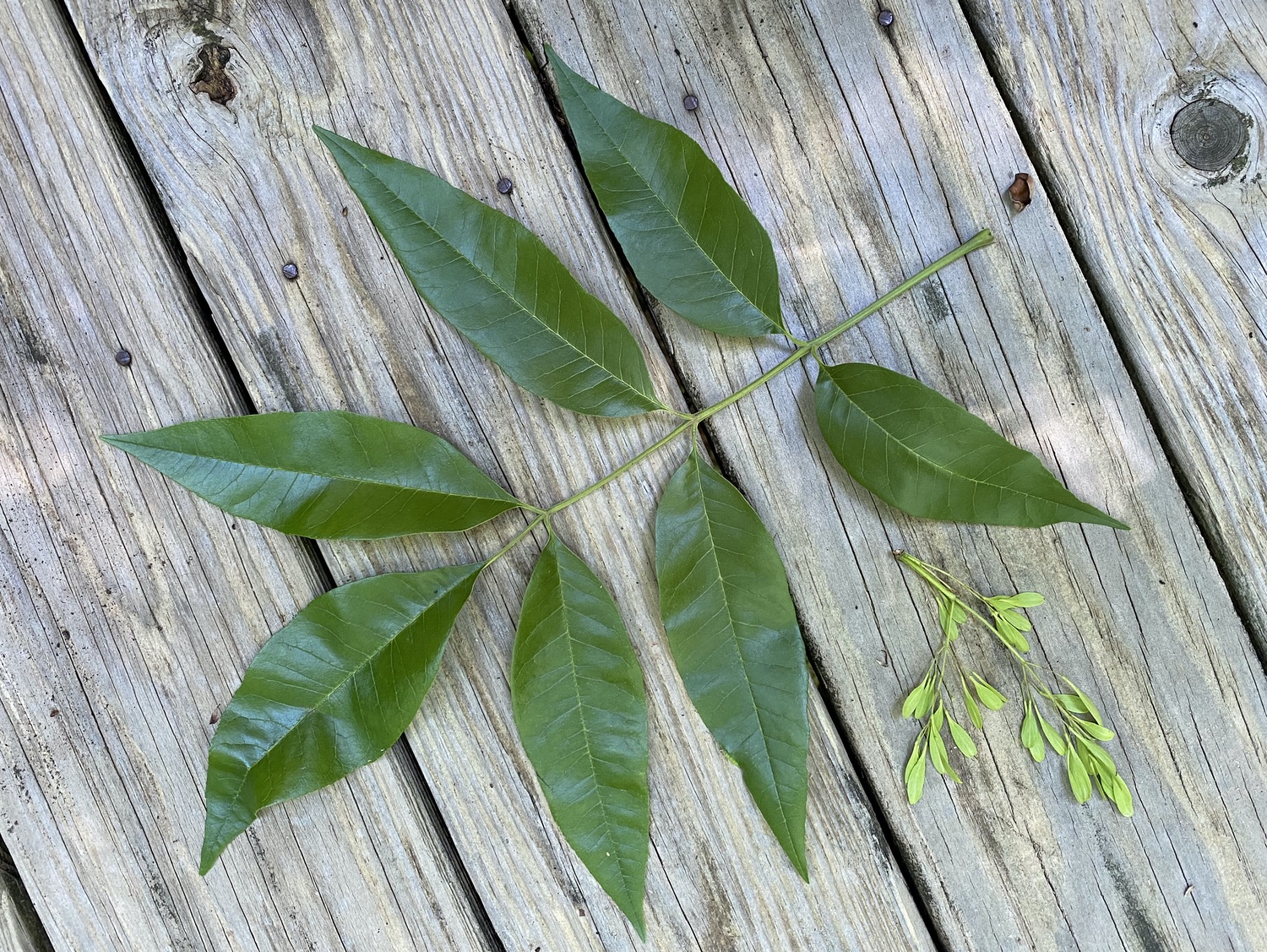
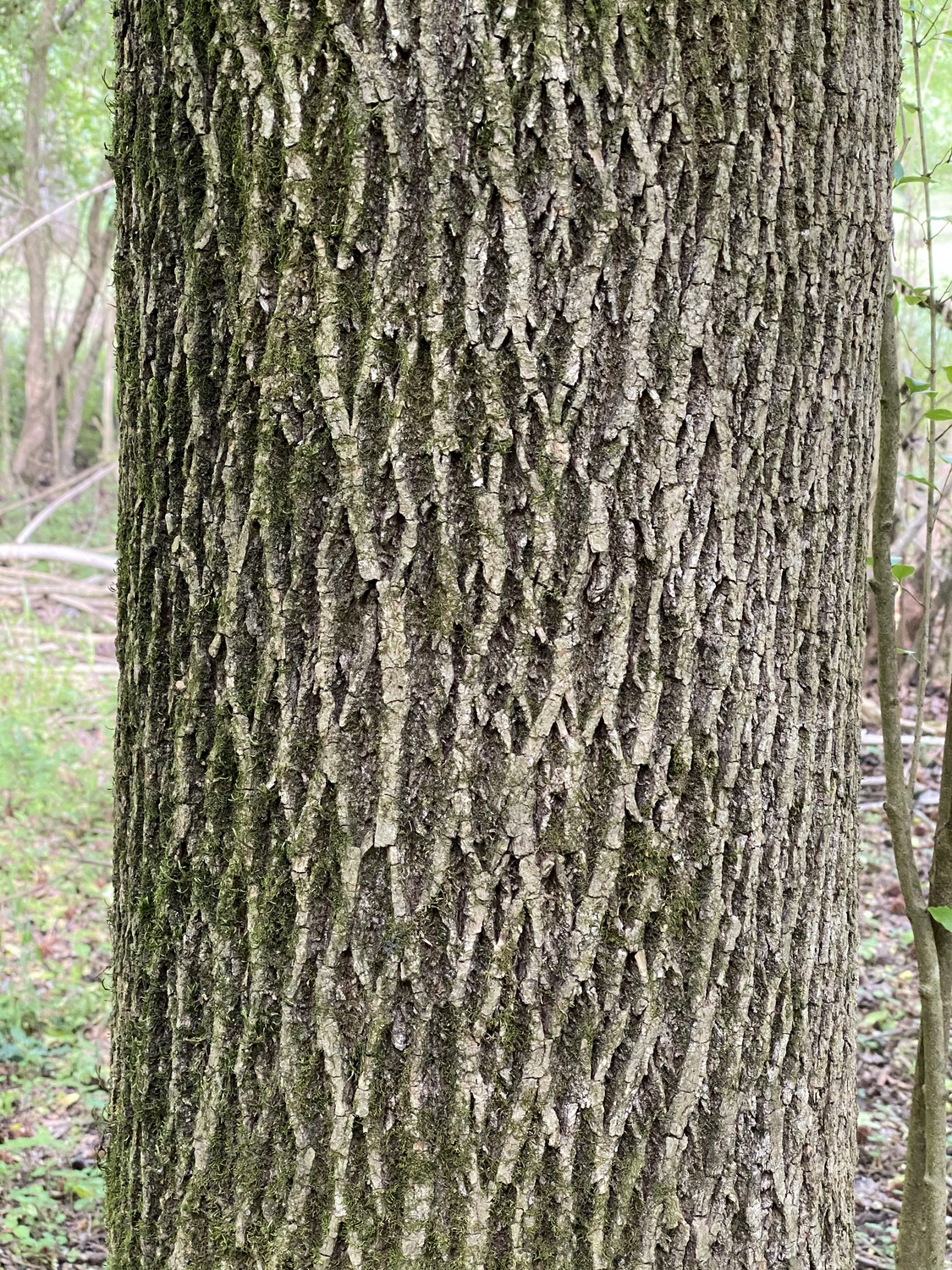
Although I have not yet found one, the White Ash (Fraxinus americana) should also be common in the area. It has longer leaves (12" vs. 9") with 9 leaflets that tend to have paler undersides.
Hyper-compound Leaves
All of the following trees have either a great many leaflets on each leaf, or they have complexly pinnate leaves, with leaflets having their own leaflets. The Black Locust and Black Walnut are native, but the Silktree, Chinaberry, and Ailanthus (Tree of Heaven) are all introduced invasives.
Black Locust (Robinia pseudoacacia). Black Locust is distinctive, even from a distance, owing to its compound leaves, often with 15–20 rounded elliptical leaves. The branches have characteristically paired, curved, stout thorns. Old, flattened, brown fruit pods often hang from the branches. The bark is deeply furrowed.
I have not yet found this in our neighborhood, but saw this one growing along a wild stretch of Tanyard Branch on the UGA campus.
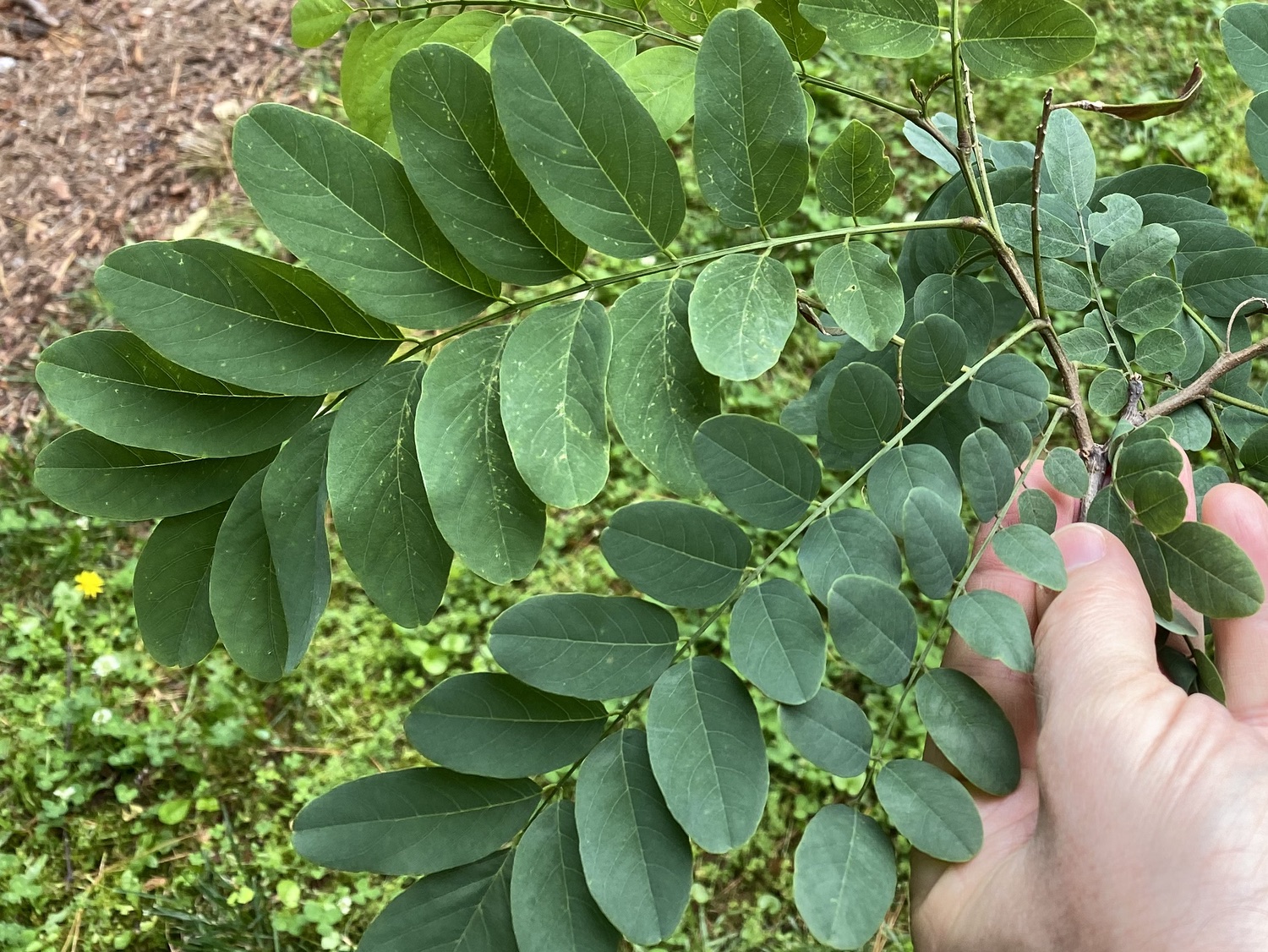
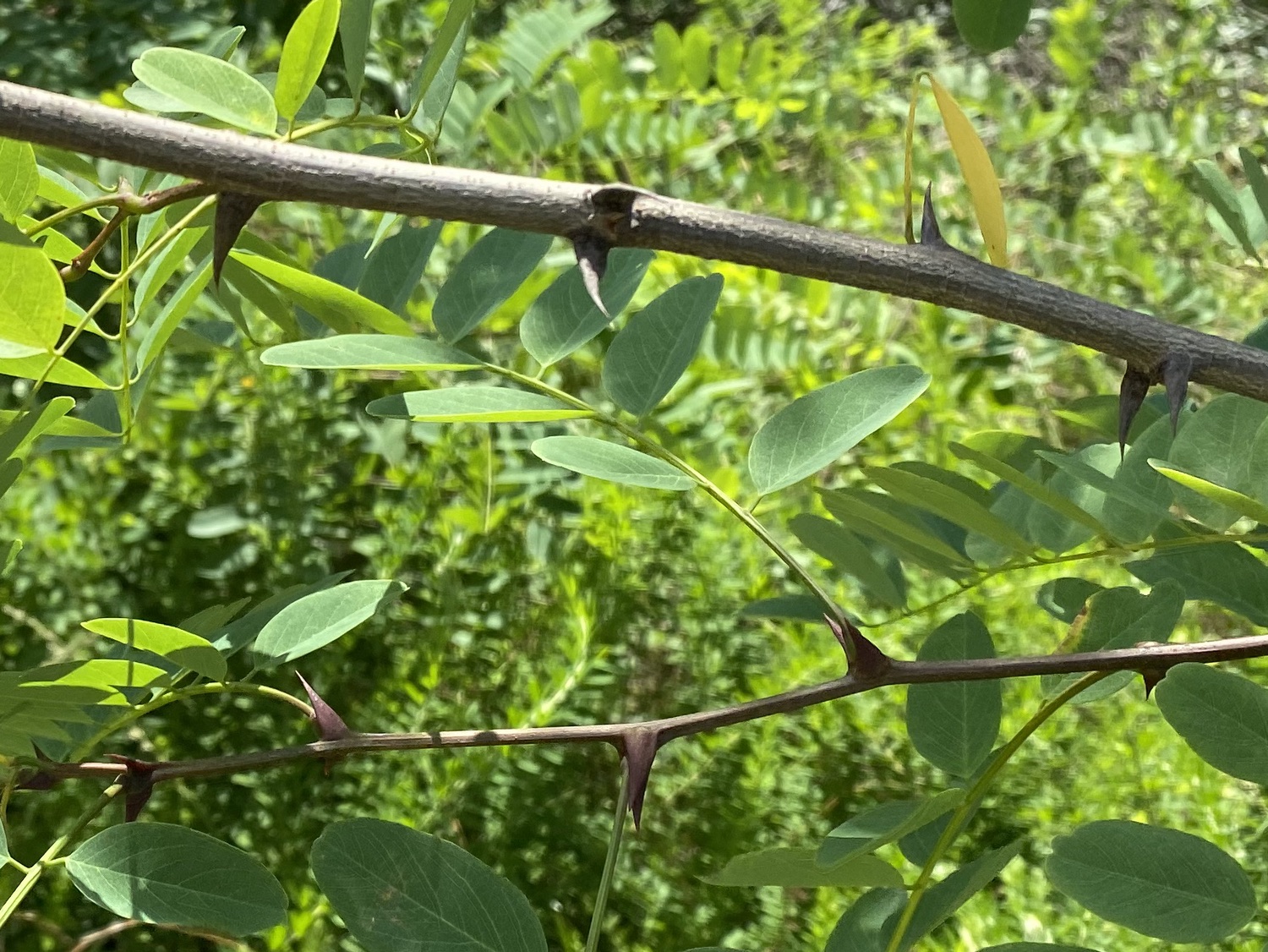
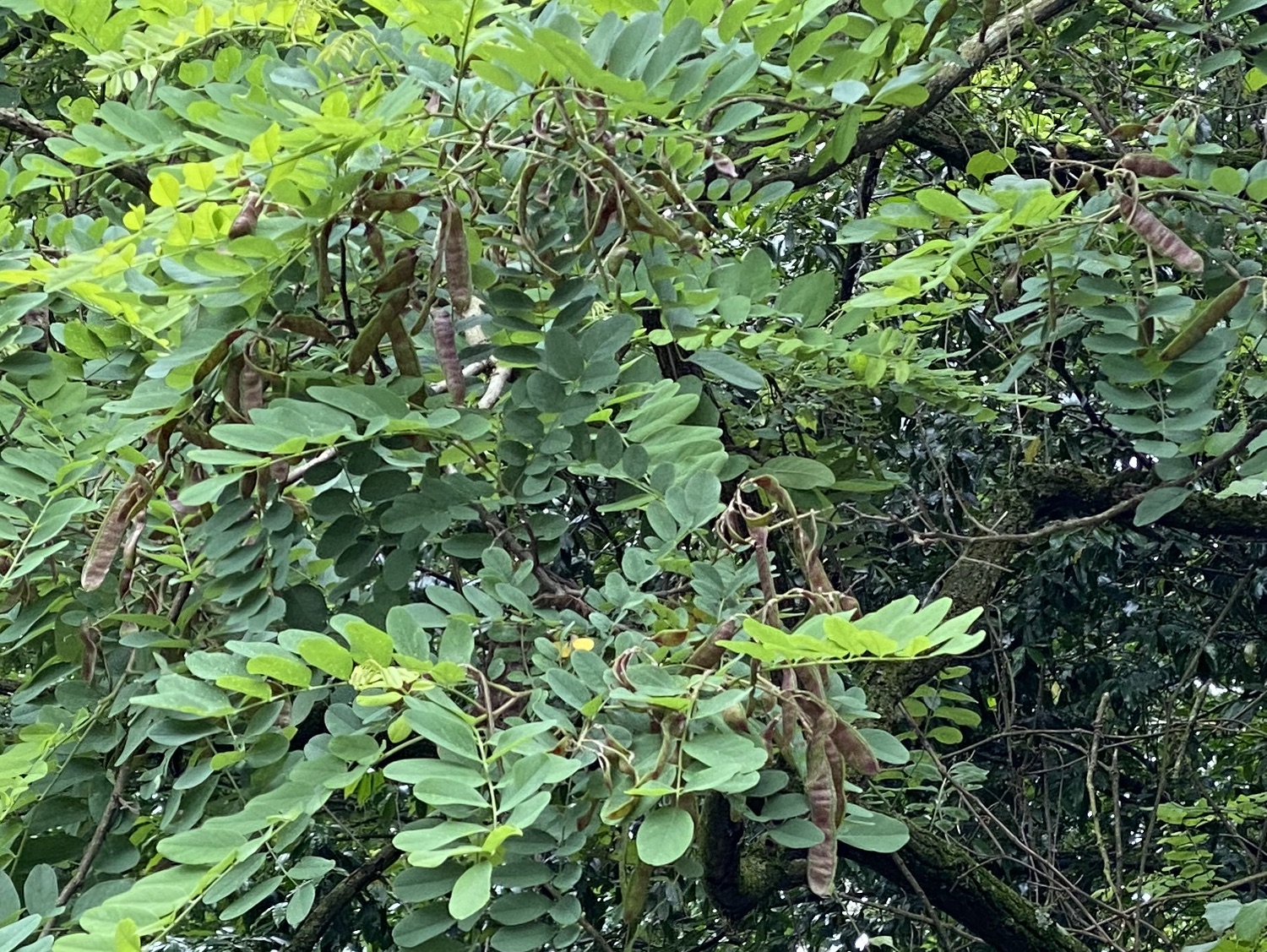
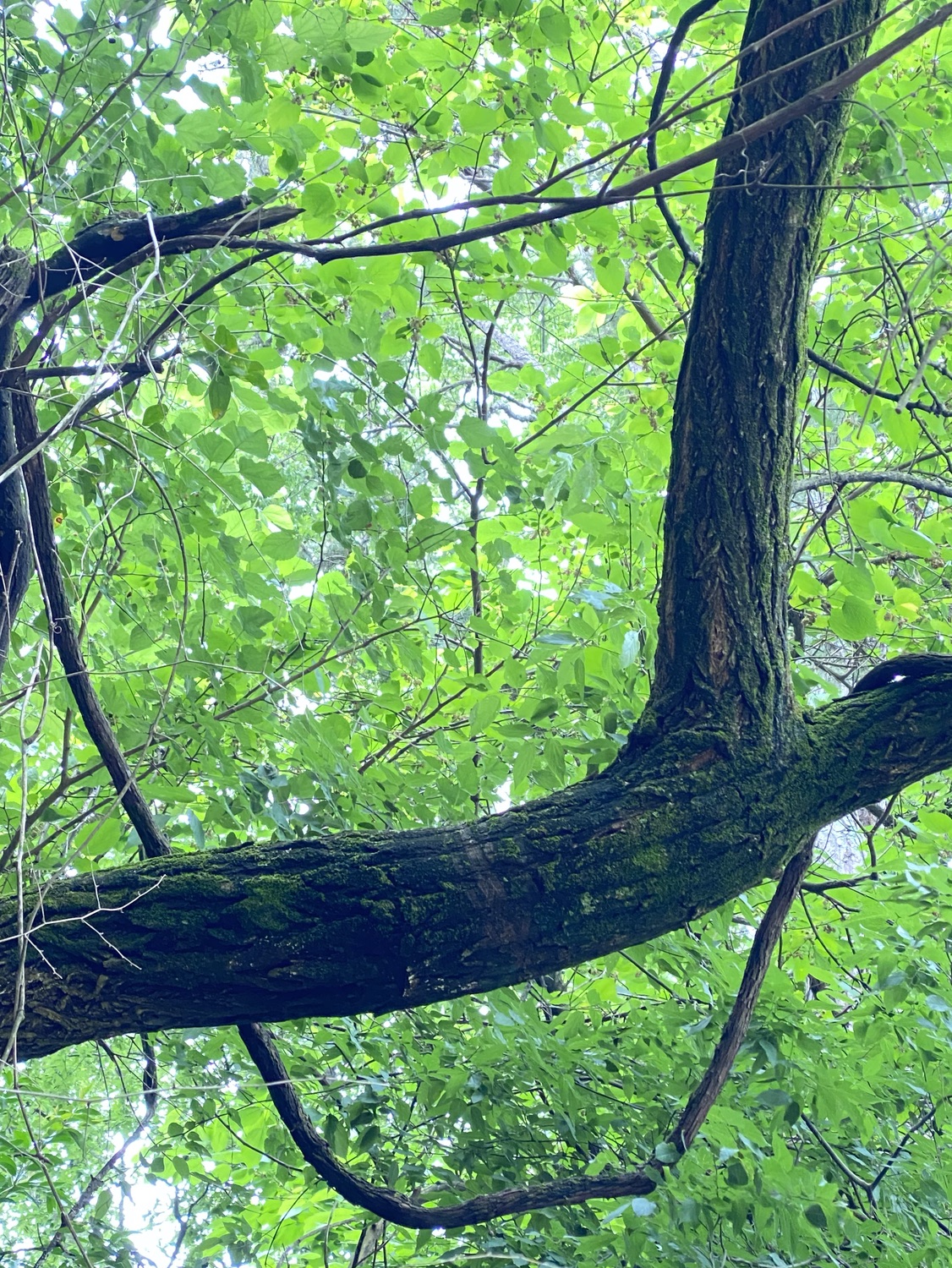
Black Walnut (Juglans nigra). Black Walnut is another distinctive tree from a distance, with its compound leaves having 15–20 pointed leaflets.
I have also not yet found this in our neighborhood, and also saw this one growing along Tanyard Branch on the UGA campus, not far from the Black Locust.
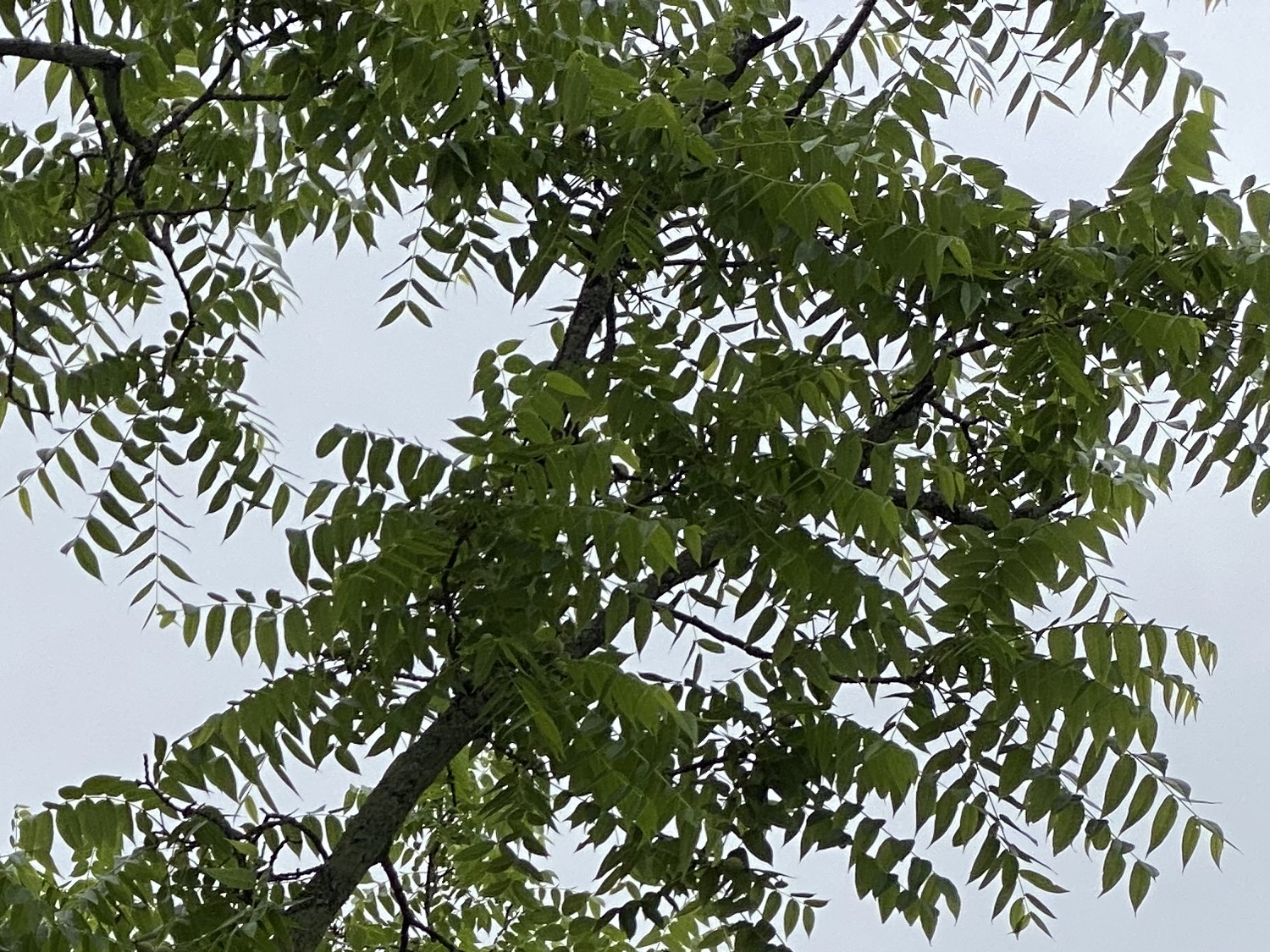
Silktree (Albizia julibrissin, also called Mimosa). This is a common invasive that is native to eastern and central Asia, and it is common along roadsides. The leaves are unique, having many leaflets, each with numerous subleaflets. The leaves fold up at night and open in the morning. Starting in early June, it is covered with fuzzy and filamentous pink-tipped flowers. In the fall, it has flattened brown fruit pods.


Chinaberry (Melia azedarach). An easily identifiable invasive tree from China and India, unique with its bipinnately compound (leaves with leaflets, which have their own leaflets) leaves. This silhouette against the sky is unmistakable. Later in the summer, the Chinaberry produces clusters of marble-sized poisonous green fruits. The bark is pale gray with striking orange furrows.
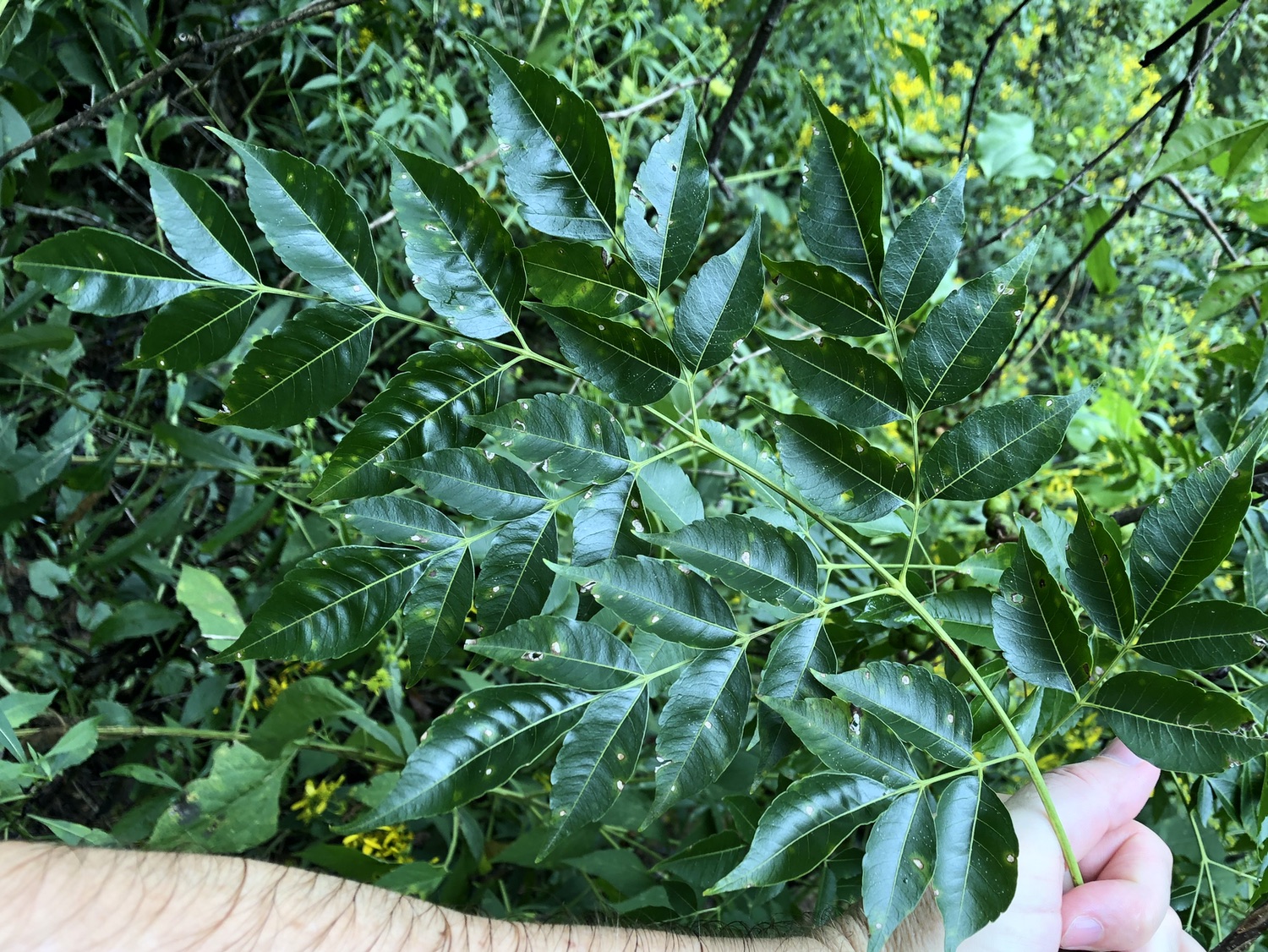
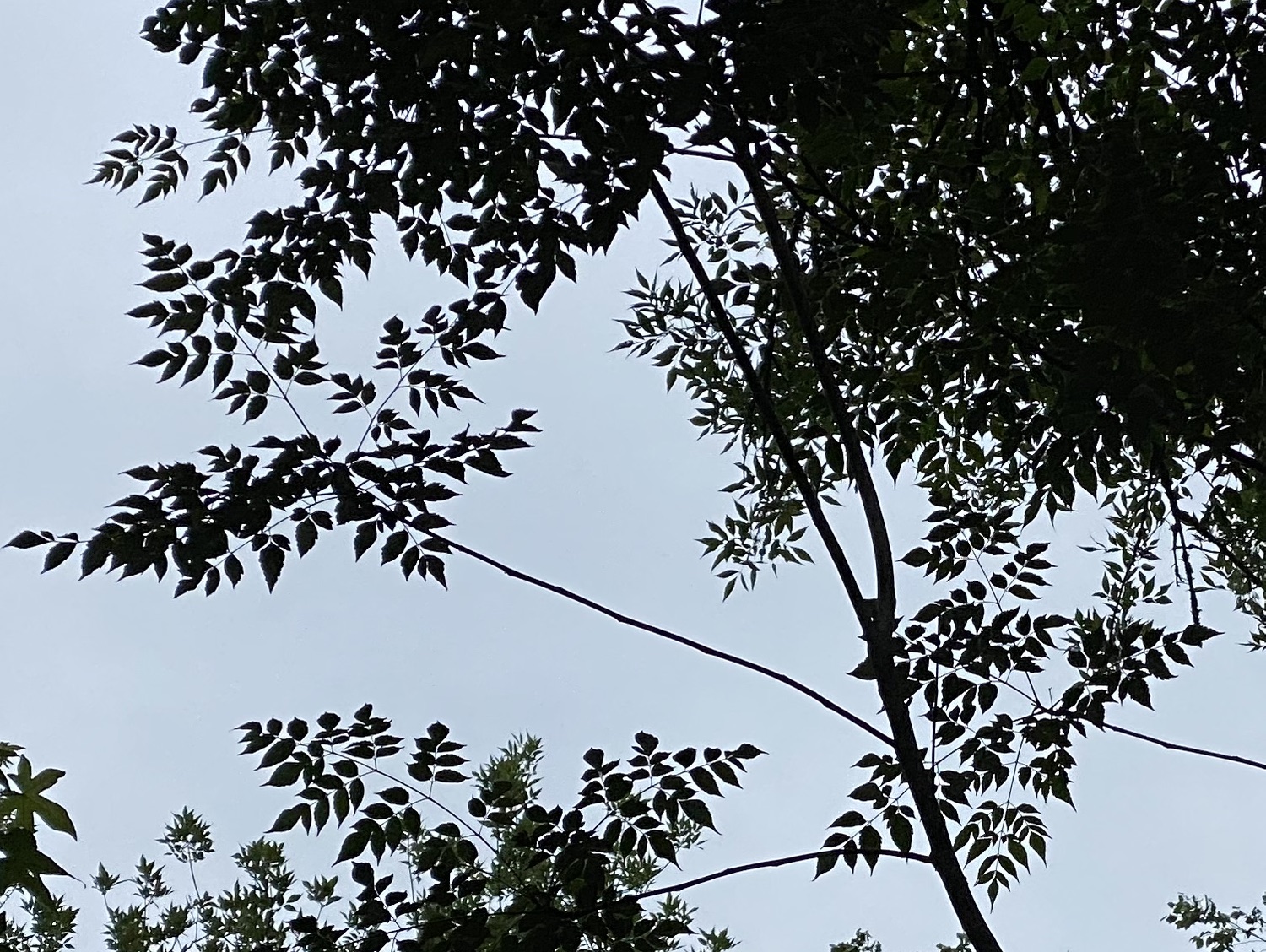
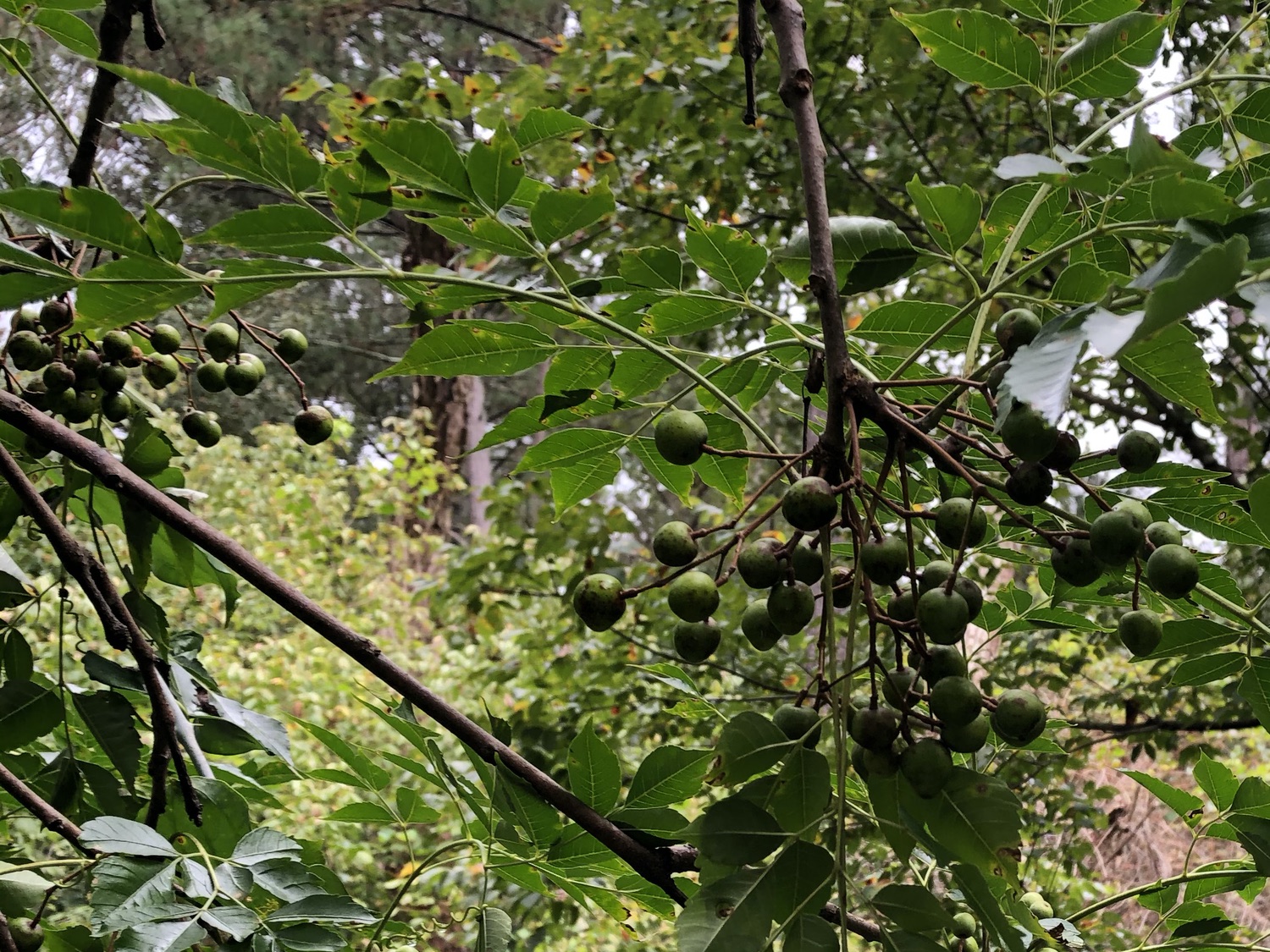
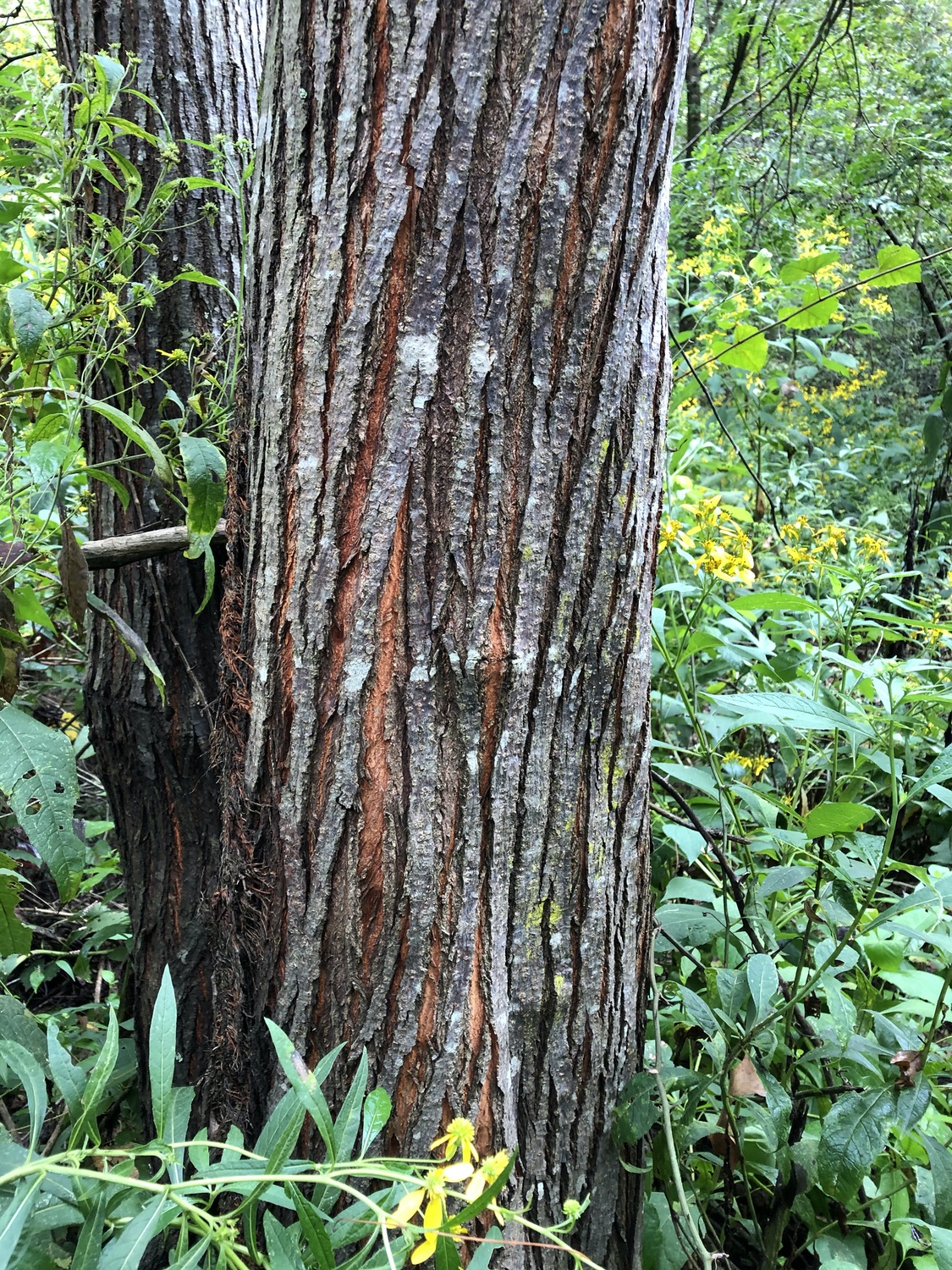
Ailanthus (Ailanthus altissima, also called the Tree-of-Heaven). This is another easily identifiable invasive from China and Taiwan, with a great many pointed leaflets on each leaf. The bark of young trees is smooth (not furrowed) and gray, with numerous leaf-attachment scars.
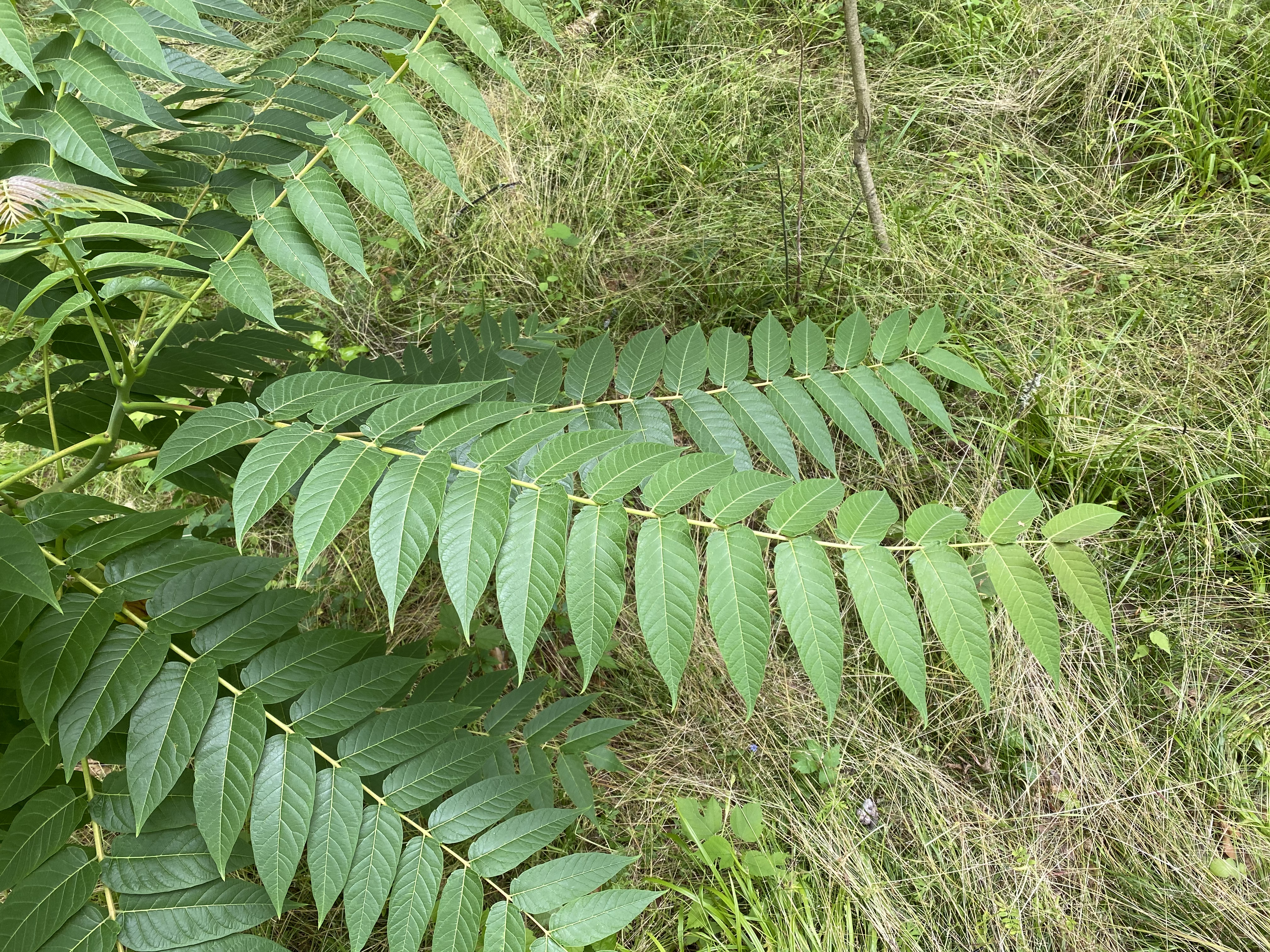
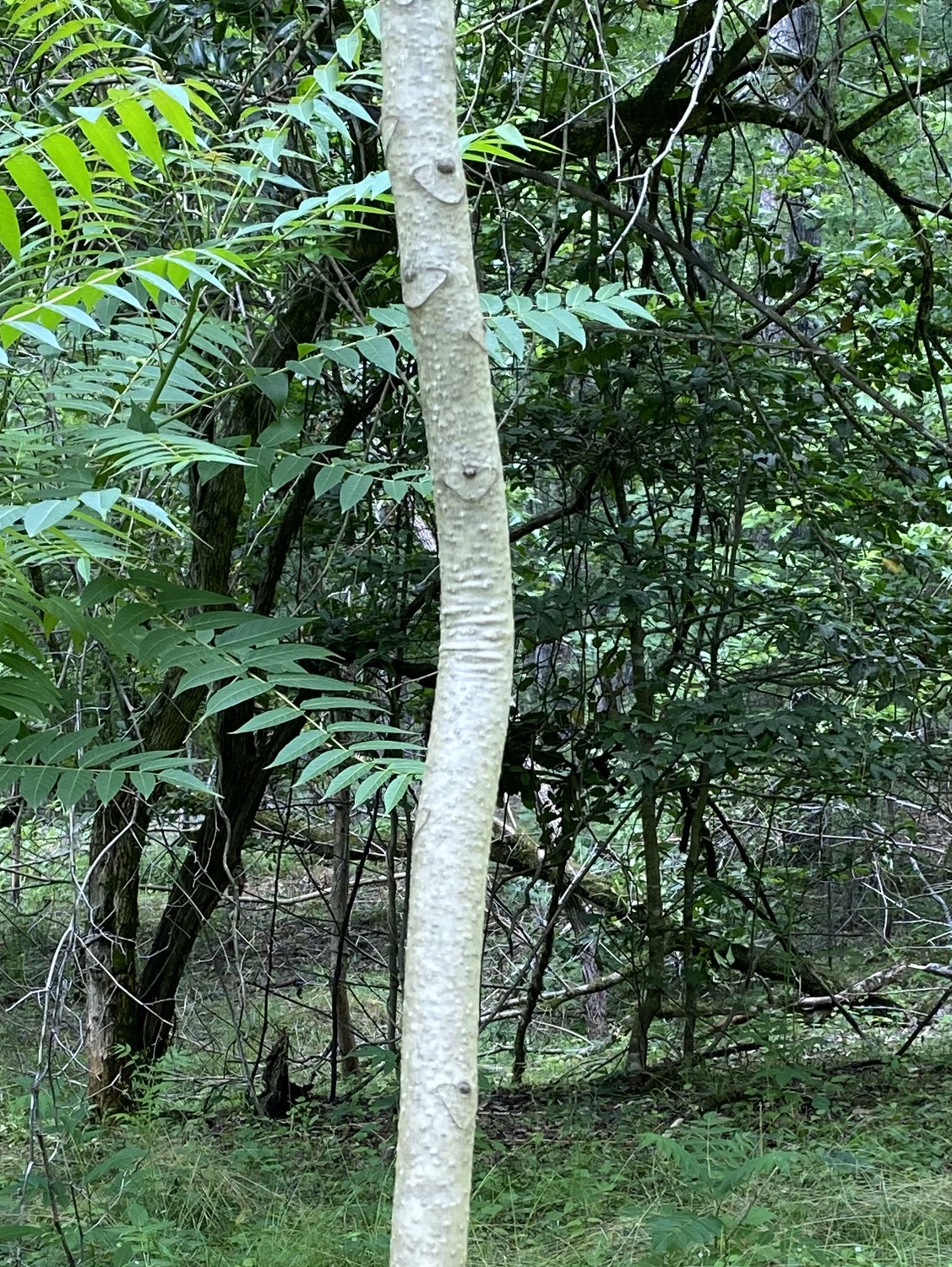
Shrubs. Trees. Shrub-trees.
Winged Sumac (Rhus copallinum, also called Shining Sumac). This is usually a shrub, but can sometimes grow into a tree up to 20' tall with a 4" elliptical trunk. It has distinctive leaves that are glossy, with wings on the leafstalk between the leaflets. The bark is smooth with horizontal ridged lenticels.

